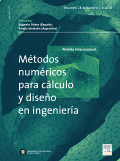
Revista Internacional de Metodos Numericos para Calculo y Diseno en Ingenieria
Scope & Guideline
Pioneering Research for Tomorrow's Engineering Challenges
Introduction
Aims and Scopes
- Numerical Methods in Engineering:
The journal emphasizes the development and application of numerical methods for solving complex engineering problems, including finite element analysis, computational fluid dynamics, and optimization techniques. - Interdisciplinary Applications:
Research published in the journal often spans various engineering disciplines, including civil, mechanical, electrical, and aerospace engineering, showcasing the versatility of numerical methods in different contexts. - Real-World Problem Solving:
A consistent focus on practical applications of numerical methods to address real-world engineering challenges, such as structural analysis, fluid dynamics, and materials science. - Innovative Computational Techniques:
The journal highlights unique contributions in computational techniques, including machine learning applications, evolutionary algorithms, and advanced simulation methods. - Performance Evaluation and Optimization:
There is a strong emphasis on performance evaluation and optimization of engineering systems, which includes numerical simulations to improve design efficiency and effectiveness.
Trending and Emerging
- Machine Learning and AI Applications:
There is an increasing trend towards the integration of machine learning and artificial intelligence in numerical methods, with applications in predictive modeling and optimization in engineering design. - Sustainable and Green Engineering:
Research focusing on sustainable engineering practices, including energy efficiency and environmental impact assessments, is gaining traction, reflecting a broader concern for sustainability in engineering. - Advanced Computational Methods:
Emerging computational techniques such as hybrid algorithms, deep learning-based simulations, and advanced optimization strategies are becoming more prevalent, indicating a shift towards more sophisticated methodologies. - Dynamic and Real-Time Analysis:
A growing emphasis on dynamic and real-time analysis in engineering applications, including the study of systems under variable loads and conditions, is evident in recent publications. - Interdisciplinary Research:
There is a noticeable increase in interdisciplinary research that combines insights from various fields such as materials science, fluid dynamics, and computer science, indicating a trend towards holistic approaches to engineering problems.
Declining or Waning
- Traditional Structural Analysis:
There has been a noticeable decrease in papers focused solely on traditional structural analysis methods, as more researchers are now integrating advanced computational techniques into their studies. - Basic Numerical Techniques:
Research focused on basic numerical techniques without innovative applications or interdisciplinary approaches has declined, as the field moves toward more complex and integrated methodologies. - Static Analysis of Structures:
The emphasis on static analysis of structures has waned, with a growing preference for dynamic analysis and real-time simulations that account for varying conditions and loads. - Generalized Studies Without Specific Applications:
Papers that present generalized numerical methods without specific engineering applications or case studies are becoming less common, as the journal favors research with practical implications.
Similar Journals
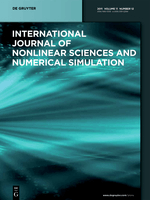
INTERNATIONAL JOURNAL OF NONLINEAR SCIENCES AND NUMERICAL SIMULATION
Advancing the Frontiers of Nonlinear ScienceINTERNATIONAL JOURNAL OF NONLINEAR SCIENCES AND NUMERICAL SIMULATION, published by WALTER DE GRUYTER GMBH, serves as a premier platform for advancing knowledge in the vibrant domains of applied mathematics, computational mechanics, and various fields of engineering and physics. With an ISSN of 1565-1339, this journal has been at the forefront of disseminating significant research findings since its inception in 2000. Its commitment to quality is reflected in its category quartiles for 2023, ranked Q2 in Computational Mechanics and Engineering (miscellaneous), and Q3 in multiple engineering disciplines. Although it currently operates under a subscription model, the journal remains dedicated to presenting groundbreaking studies that explore complex nonlinear phenomena and numerical methodologies. As an invaluable resource for researchers, professionals, and students alike, the journal aims to foster innovation and collaboration across related fields, enhancing both theory and application through its peer-reviewed articles.
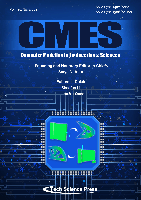
CMES-COMPUTER MODELING IN ENGINEERING & SCIENCES
Empowering Innovation through Modeling & SimulationCMES-COMPUTER MODELING IN ENGINEERING & SCIENCES is a premier journal published by Tech Science Press, dedicated to advancing knowledge in the fields of computer science applications, modeling and simulation, and software engineering. With an impressive convergence of research from 2000 to 2024, this journal stands out as a vital resource for researchers, professionals, and students alike, fostering innovation and collaboration in computational methodologies. The journal currently holds a Q3 category ranking in multiple disciplines according to the latest metrics, including Scopus, which reflects its growing significance in the academic community. By providing a platform for high-quality research and open discourse, CMES aims to enhance the understanding of complex systems through effective modeling techniques and computational tools. Despite its current classification under open access, the journal remains a cornerstone for those looking to deepen their expertise in cutting-edge computational engineering and science.
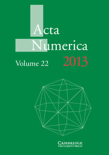
ACTA NUMERICA
Championing Excellence in Computational Research.ACTA NUMERICA, published by Cambridge University Press, stands as a premier journal in the fields of Mathematics and Numerical Analysis since its inception in 1992. With an impressive Scopus ranking that places it in the 99th percentile and a prestigious Q1 category status in both Mathematics (miscellaneous) and Numerical Analysis for 2023, it has established itself as a leading platform for cutting-edge research. The journal's scope encompasses a wide range of numerical methods and computational techniques that address complex mathematical problems, making it an essential resource for researchers, professionals, and students alike. Although it does not provide Open Access, its commitment to quality and innovation in the mathematical sciences continues to attract submissions from around the globe. Published in the United Kingdom, ACTA NUMERICA remains a vital channel for disseminating significant advancements in numerical methodologies.

Journal of the Serbian Society for Computational Mechanics
Pioneering Research in Computational MechanicsJournal of the Serbian Society for Computational Mechanics, published by the Serbian Society for Computational Mechanics, is a vital platform for advancing research and knowledge in the field of computational mechanics. Established in 2012, this journal serves the academic community by providing a forum for innovative studies, methodologies, and applications within computational mechanics, presenting valuable insights for researchers, professionals, and students alike. With an ISSN of 1820-6530 and a ranking of Q4 in Computational Mechanics, it carries an essential influence in the engineering realm, despite its current rank of 71 out of 89. The journal's commitment to scholarly excellence aims to foster collaboration and encourage interdisciplinary research, making it an important resource for those invested in the evolving landscape of computational methodologies. Although the journal currently does not offer Open Access options, it remains dedicated to disseminating knowledge that will resonate within the local and global scientific community.
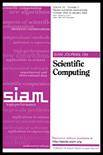
SIAM JOURNAL ON SCIENTIFIC COMPUTING
Exploring the Intersection of Science and ComputingSIAM Journal on Scientific Computing is a premier journal published by SIAM Publications, focusing on the interdisciplinary domain of scientific computing. With a significant standing in the academic community, this journal boasts a 2023 Q1 ranking in both Applied Mathematics and Computational Mathematics, positioning it among the top-tier publications in these fields. The journal aims to disseminate high-quality research that applies computational methods to solve scientific and engineering problems, fostering advancements in numerical analysis, algorithms, and software development. Researchers and professionals can greatly benefit from the journal's rigorous peer-review process and its reputation for publishing cutting-edge studies. Though it is not an open-access journal, subscribing institutions and individual subscribers gain access to a wealth of knowledge tailored for those seeking to enhance their expertise in scientific computation. With its established history since 1996 and continuing to publish until 2024, the SIAM Journal on Scientific Computing remains an essential resource for students, researchers, and professionals dedicated to pushing the boundaries of this dynamic field.

ARCHIVES OF COMPUTATIONAL METHODS IN ENGINEERING
Exploring New Frontiers in Computational Engineering Methodologies.ARCHIVES OF COMPUTATIONAL METHODS IN ENGINEERING, published by SPRINGER, is a premier journal dedicated to advancing the fields of applied mathematics and computer science applications. With an impressive impact factor and a distinguished ranking of #5/635 in Applied Mathematics and #19/817 in Computer Science Applications as of 2023, this journal stands in the upper echelon of academic literature, evidenced by its classification in the Q1 category. Established in 1994 and running through to 2024, the journal serves as a vital platform for the dissemination of research that utilizes computational methods to solve complex engineering problems. Researchers, professionals, and students alike benefit from its rigorous peer-review process and high-quality articles, fostering innovation and collaboration within the computational engineering community. Although it does not offer Open Access, its insights are invaluable for those looking to stay at the forefront of engineering methodologies and computational advancements.
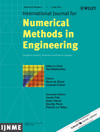
INTERNATIONAL JOURNAL FOR NUMERICAL METHODS IN ENGINEERING
Transforming engineering challenges into numerical solutions.INTERNATIONAL JOURNAL FOR NUMERICAL METHODS IN ENGINEERING, published by WILEY, stands at the forefront of research in the fields of applied mathematics, engineering, and numerical analysis, as evidenced by its prestigious Q1 category rankings across these disciplines for the year 2023. With a long-standing legacy since 1969 and an impressive trajectory projected through 2024, this journal is dedicated to advancing the methodologies and applications of numerical techniques in engineering contexts. Researchers and professionals can access cutting-edge findings that contribute significantly to the optimization and innovation of engineering practices. Although it operates under a subscription model, the journal's impact factor and high citation rates underscore its vital role in influencing contemporary engineering research and education. Its rigorous selection process ensures high-quality, peer-reviewed articles that reflect the latest advancements and challenges in the field, making it an indispensable resource for academics, industry experts, and students alike.

COMPUTATIONAL MECHANICS
Unveiling New Horizons in Computational MechanicsCOMPUTATIONAL MECHANICS, published by SPRINGER, is a premier international journal that focuses on the intersection of applied mathematics, engineering, and computational methods. With a commendable Q1 ranking in multiple categories, including Applied Mathematics and Mechanical Engineering, this journal is pivotal for disseminating groundbreaking research and innovative methodologies that advance the field. The journal has steadily contributed to the academic community since its inception in 1986 and continues to lead discussions and practices in computational mechanics and related disciplines. With a robust impact reflected in its Scopus rankings—placing it within the top percentiles across various categories—COMPUTATIONAL MECHANICS serves as a crucial platform for researchers, professionals, and students seeking to explore and contribute to significant advancements in computational theory and mathematical applications. Although it does not currently operate under an open access model, the journal ensures wide accessibility through libraries and institutional subscriptions, fostering a rich exchange of knowledge in the global scientific community.
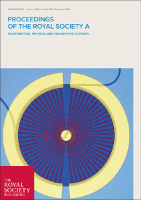
PROCEEDINGS OF THE ROYAL SOCIETY A-MATHEMATICAL PHYSICAL AND ENGINEERING SCIENCES
Advancing the Frontiers of Mathematics, Physics, and Engineering.PROCEEDINGS OF THE ROYAL SOCIETY A-MATHEMATICAL PHYSICAL AND ENGINEERING SCIENCES is a prestigious academic journal published by the Royal Society in the United Kingdom, dedicated to the dissemination of high-quality research in the fields of Mathematics, Engineering, and Physics. With an esteemed impact factor and ranked in the top quartiles (Q1) across various categories, this journal stands out as a leading source of innovative findings and critical discussions within the global scientific community. Researchers benefit from its comprehensive coverage that spans from theoretical explorations to practical applications, and the journal plays a crucial role in advancing knowledge and fostering interdisciplinary collaboration. Although it does not currently offer Open Access options, its influence is underscored by notable Scopus rankings, evidencing its significant contribution to the fields it represents. Located at 6-9 Carlton House Terrace, London SW1Y 5AG, England, the journal continues to be a cornerstone for scholars seeking to publish impactful research and stay informed on the latest advancements in science and engineering.
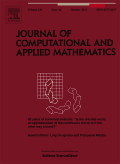
JOURNAL OF COMPUTATIONAL AND APPLIED MATHEMATICS
Navigating the Future of Computational MathematicsJOURNAL OF COMPUTATIONAL AND APPLIED MATHEMATICS, published by Elsevier, stands as a premier platform for researchers and practitioners in the fields of applied and computational mathematics. With an impressive convergence history from 1975 to 2025, this journal has established itself as a crucial reference point for innovative mathematical theories, methodologies, and applications. Holding a distinguished position in Scopus rankings—#85 out of 635 in Applied Mathematics and #36 out of 189 in Computational Mathematics—it operates in the highly competitive Q2 quartile for both disciplines as of 2023. Although currently not designated as an open-access journal, it remains widely respected for its rigorous peer-review process and high-quality research contributions. Researchers and professionals seeking to advance their work and engage with cutting-edge developments will find this journal an invaluable resource, fostering a deeper understanding and collaboration within the mathematical community.